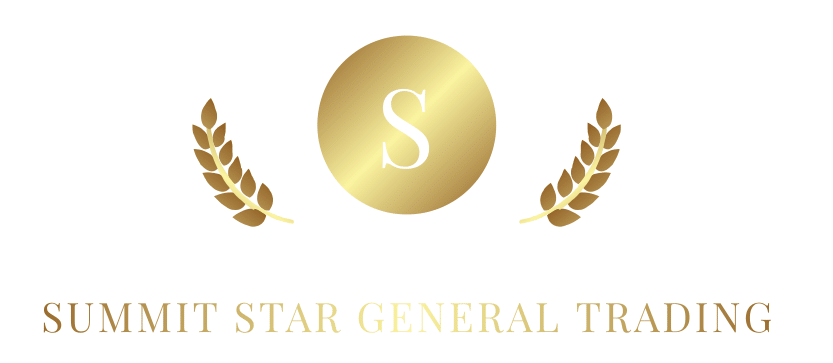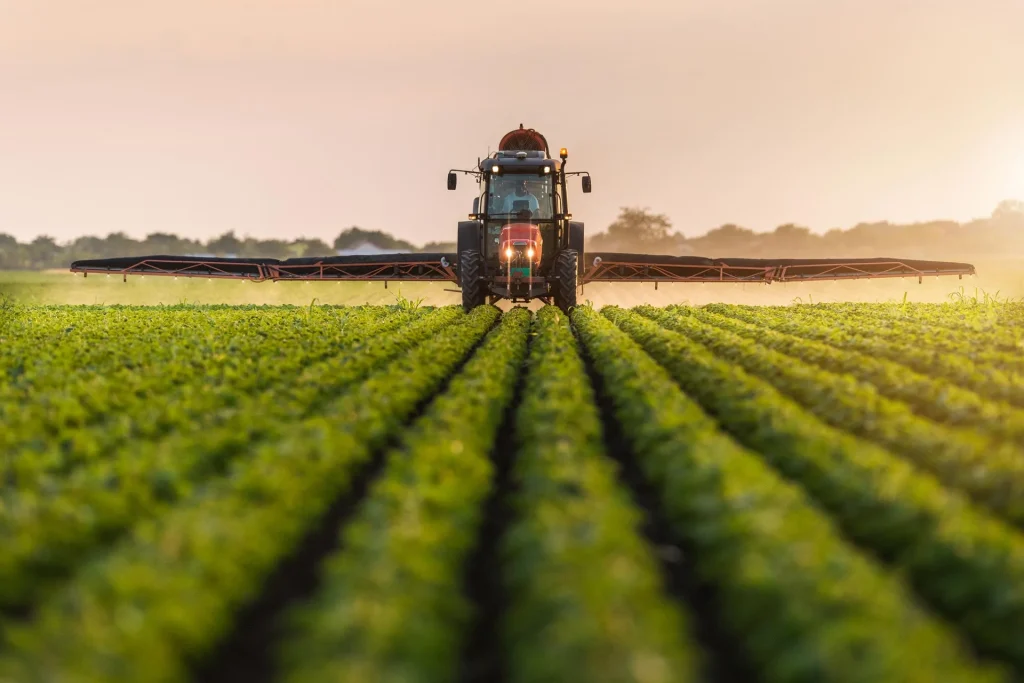The agricultural commodities sector plays a critical role in feeding the world and powering economies. From grains and oilseeds to coffee and cotton, these commodities are influenced by a complex mix of market forces and farming practices. In this blog, we delve into current market trends in agricultural trade, the growing emphasis on sustainable farming practices, and the global demand shaping key agricultural products. Understanding these factors is vital for industry stakeholders and for companies like Summit Star that operate in agricultural markets.
Market Trends in Agricultural Trade
Global agriculture is a multi-trillion-dollar industry, and it’s expanding steadily. The agricultural commodity market worldwide was valued at roughly $1.76 trillion in 2023. Industry projections show continued growth at about 4% annually through the rest of the decade. Several drivers are fueling this expansion. First and foremost is the increasing global demand for food. A growing population, rising incomes, and urbanization—especially in emerging markets—are pushing up the consumption of staples like grains, oilseeds, and animal products. Additionally, new uses for farm goods (such as biofuels and industrial applications of crops) are contributing to higher demand. In response, farmers and agribusinesses have ramped up production, and international trade of commodities remains robust to get surplus produce from food-exporting regions to those in need.
However, the market has been anything but smooth. Recent years saw unprecedented volatility in food prices. In 2022, global food commodity prices hit record highs, with the FAO Food Price Index averaging 143.7 points – the highest since records began in 1990. This spike (up 14% from the previous year) was driven by supply shocks, including geopolitical conflicts and extreme weather. For instance, the war in Ukraine disrupted grain and vegetable oil exports, while droughts in key producing regions tightened supply. Cereal prices alone jumped nearly 18% in 2022 amid these disruptions. Such volatility highlighted the vulnerability of our food supply chains. By late 2023, prices had moderated from their peak, but uncertainty remains a hallmark of agricultural markets. Factors like trade policies, energy costs, and climate events (droughts, floods) can swiftly alter commodity availability and prices.
Interestingly, looking ahead, demand growth for major crops may slow down compared to past decades. The OECD-FAO Agricultural Outlook projects that global food consumption will increase by about 1.3% per year over the next decade – a slower pace than the previous ten years. The moderation is attributed to a tapering of population growth and saturation of per-capita consumption in some regions. Even so, 1.3% annual growth still means a significant rise in absolute demand by 2032. Emerging economies in Asia and Africa will account for much of this increase, as their populations expand and diets diversify. Overall, agricultural trade will continue to be shaped by the push-and-pull of supply, demand, and unpredictable external shocks. Stakeholders must keep a close eye on market indicators and maintain flexibility to navigate this dynamic environment.
Embracing Sustainable Farming Practices
Amid market pressures, there’s a parallel revolution happening on the farm. Sustainable farming practices have moved into the mainstream conversation as the agriculture industry grapples with environmental challenges. Agriculture is both impacted by and a contributor to issues like climate change, soil degradation, and water scarcity. In fact, farming and related land use account for roughly a quarter of global greenhouse gas emissions. This reality is driving a shift toward practices that can make agriculture more eco-friendly and resilient. Farmers worldwide are increasingly exploring techniques such as conservation tillage (to protect soil), crop rotation and diversification, organic farming, precision irrigation, and integrated pest management. The goal is to produce abundant yields while reducing environmental impact – essentially doing more with less harm.
Companies and governments are encouraging this shift. Many big food buyers and consumer goods brands have pledged to source raw materials that are grown sustainably (e.g. deforestation-free supply chains and regenerative agriculture commitments). Governments, too, are offering incentives and funding for sustainable agriculture – for example, the U.S. has dedicated billions to conservation programs and climate-smart agriculture initiatives. These trends are evident in the market. As noted, one driver of agricultural market growth is the rising focus on sustainability: producers are adopting methods that conserve resources and improve soil health, which in turn can support long-term productivity. Innovations in agri-tech are making this easier. Precision agriculture technologies – like soil sensors, GPS-guided equipment, and drones – allow farmers to target water and fertilizer use efficiently, minimizing waste. Improved crop varieties (including drought-tolerant or pest-resistant strains, sometimes genetically modified) are helping farmers maintain yields with fewer inputs. Advanced irrigation systems conserve water by delivering it exactly when and where crops need it.
Thanks to these efforts, sustainable farming is slowly gaining ground, but there is still a long way to go. According to industry analyses, while awareness is high, the overall adoption of sustainable practices remains relatively low in terms of global farmland percentage. Many farmers cite barriers such as higher upfront costs, uncertain short-term yields during the transition, or lack of technical know-how. Nevertheless, adoption is growing year by year as benefits become more evident and support networks strengthen. Early adopters have reported improved soil fertility, reduced costs on inputs (through efficient usage), and access to premium markets (like organic or sustainably certified products). Crucially, sustainable practices also build resilience against climate variability – for example, healthier soil can better retain moisture during droughts. In summary, sustainable farming is moving from theory to practice, gradually transforming how food is produced. This shift not only helps protect the environment but can also ensure more stable output in the face of climate and market risks.
Global Demand and the Outlook for Key Agricultural Products
The long-term trajectory for agricultural commodities is shaped by global demand. Simply put, the world’s population – now at 8 billion and rising – needs food, fiber, and fuel. Even with a slight deceleration in growth rates, the United Nations expects we’ll add another 1–2 billion people in the coming decades. This translates into higher demand for staples like rice, wheat, and corn, as well as high-protein foods (meat, dairy) and bio-based products (like biofuels or biodegradable plastics derived from crops). Rising incomes in developing countries mean many people are diversifying their diets, eating more animal protein, fruits, and vegetables, which in turn increases the demand for feed grains and specialty crops.
Certain key commodities illustrate this global demand trend. Take soybeans, for instance – a critical source of protein meal for animal feed and oil for cooking and industry. Global soybean trade has expanded massively, driven largely by China’s demand for livestock feed. In 2023, worldwide soybean output hit a record high (over 400 million tons) to keep pace with this demand. Similarly, corn production and trade remain at elevated levels as corn is a pillar for food security (as human food in many regions), feed, and ethanol fuel. Wheat, rice, and other cereals see steady demand growth, especially in regions where they’re dietary staples. On the other hand, commodities like coffee, cocoa, and cotton are tied to consumer preferences and economic growth, but they too show upward consumption trends in developing markets.
It’s worth noting that meeting this demand is not just about planting more acres; it’s also about boosting productivity and efficiency. Over the past few decades, a significant portion of agricultural output growth came from yield improvements rather than expansion of farmland. This was achieved through better technology, improved crop genetics, and enhanced farming practices. Going forward, further innovations – from advanced biotech seeds to AI-driven farm management – will be critical in squeezing out additional productivity gains sustainably. The concept of “sustainable intensification” is often cited: growing more on the same land area with smarter methods so that we can feed more people without depleting natural resources.
Finally, global demand is interconnected with trade policies and international relations. Many countries rely on imports for key foods (e.g., Middle Eastern and North African nations importing grains), which means maintaining open trade channels is vital. Issues like tariffs, export bans, or conflicts can quickly create supply shortfalls in dependent regions. We have seen how a single major event (like a war or a pandemic) can send shockwaves through commodity markets. For businesses and investors in the agricultural commodity space, staying informed about market trends, pursuing sustainability, and planning for demand shifts are all part of navigating the future. Despite challenges, the overall outlook for agriculture remains one of opportunity: continued global demand growth, new markets emerging (such as plant-based proteins or organic products), and constant innovation promise a dynamic decade ahead for agricultural commodities.

